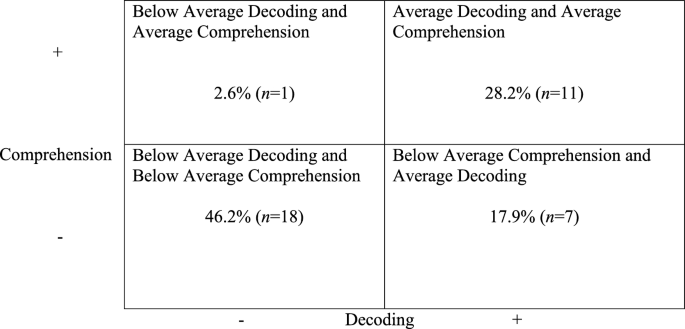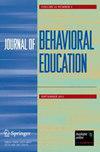自闭症谱系障碍学生的阅读教学:教学观察与学生阅读概况的比较
IF 1.2
4区 教育学
Q3 EDUCATION, SPECIAL
引用次数: 0
摘要
尽管对ASD学生阅读干预问题的研究数量显著增加(例如,Bailey和Arciuli, Rev J Autism Dev disorder 7(2):127 - 150,2020;蒋和林,关注自闭症和其他发展障碍22(4):259-267,2007),很少有研究调查了目前ASD儿童在学校的阅读实践。这项混合方法研究报告了美国两个不同地理区域4-8年级(9-14岁)自闭症谱系障碍(ASD)学生(N = 39)的阅读教学和阅读表现。数据收集包括对1级和2/3级阅读教学的系统观察。学生们还接受了单词识别、语言和阅读理解方面的标准化测试。本研究的目的是在描述学生在一系列标准化测试中的表现的背景下,对ASD学生阅读教学的有限观察研究做出贡献。共168节课,共计7497分钟的观察课堂时间,并对学生进行了一系列的测量。观察结果表明,在不同层次的教学中,44-48%的教学时间用于理解监测,包括回答教师指导的问题。用于单词识别教学的时间很少。根据评估的结果,大约46%的学生在单词识别和阅读理解方面的得分低于平均水平。研究结果表明,学生的需求与满足需求的方式之间存在不匹配。本文章由计算机程序翻译,如有差异,请以英文原文为准。

Reading Instruction for Students with Autism Spectrum Disorder: Comparing Observations of Instruction to Student Reading Profiles
Abstract Despite a marked increase in the volume of research investigating issues about reading interventions for students with ASD (e.g., Bailey and Arciuli, Rev J Autism Dev Disord 7(2):127–150, 2020; Chiang and Lin, Focus Autism Other Dev Disab 22(4):259–267, 2007), very few studies have examined the current reading practices experienced by children with ASD in the schools. This mixed-method study reports on the observed reading instruction and reading performance of students ( N = 39) with autism spectrum disorder (ASD) in grades 4–8 (ages 9–14 years.) across two separate geographic regions of the USA. Data collection included systematic observations of tier 1 and tier 2/3 reading instruction. Students were also assessed with standardized measures of word recognition, language, and reading comprehension. The purpose of this investigation was to contribute to the limited corpus of observation research on reading instruction for students with ASD within the context of describing student performance on battery of standardized measures. A total of 168 lesson sessions totaling 7497 min of observed class time were completed and the battery of measures were administered to students. Results of the observations indicated that 44–48% of instructional time across different tiers of instruction were dedicated to comprehension monitoring consisting of answering teacher directed questions. Minimal amounts of time were dedicated to word recognition instruction. According to findings from the assessment battery, approximately 46% of students had below average scores on word recognition and reading comprehension measures. Study findings suggest a mismatch between student needs and the manner in which they were addressed.
求助全文
通过发布文献求助,成功后即可免费获取论文全文。
去求助
来源期刊

Journal of Behavioral Education
EDUCATION, SPECIAL-
CiteScore
4.30
自引率
10.00%
发文量
34
期刊介绍:
The Journal of Behavioral Education is an international forum dedicated to publishing original research papers on the application of behavioral principles and technology to education. Education is defined broadly and the journal places no restriction on the types of participants involved in the reported studies--including by age, ability, or setting. Each quarterly issue presents empirical research investigating best-practices and innovative methods to address a wide range of educational targets and issues pertaining to the needs of diverse learners and to implementation. The Journal of Behavioral Education is a peer-reviewed scholarly journal whose target audience is educational researchers and practitioners including general and special education teachers, school psychologists, and other school personnel. Rigorous experimental designs, including single-subject with replication and group designs are considered for publication. An emphasis is placed on direct observation measures of the primary dependent variable in studies of educational issues, problems, and practices. Discussion articles and critical reviews also are published.
 求助内容:
求助内容: 应助结果提醒方式:
应助结果提醒方式:


